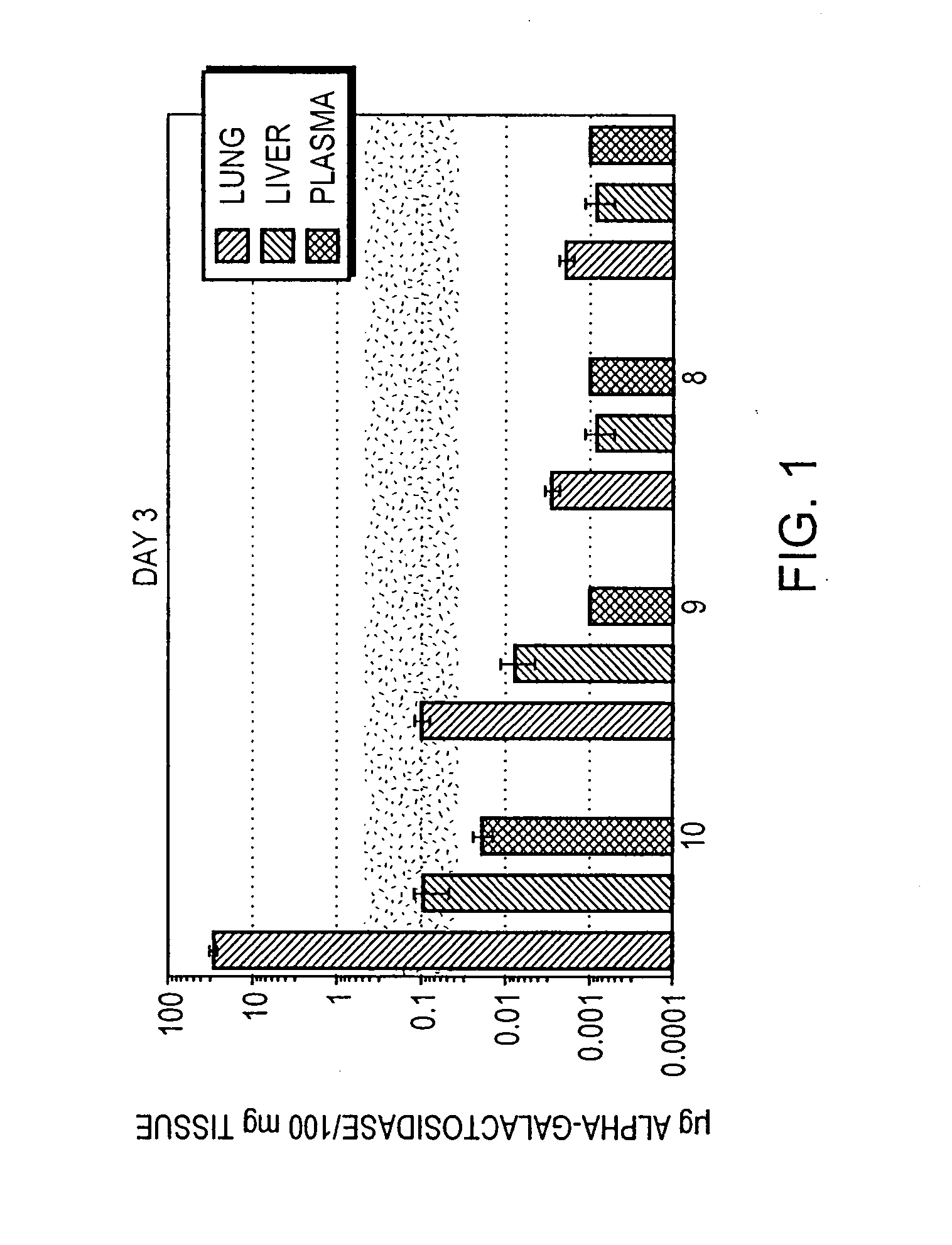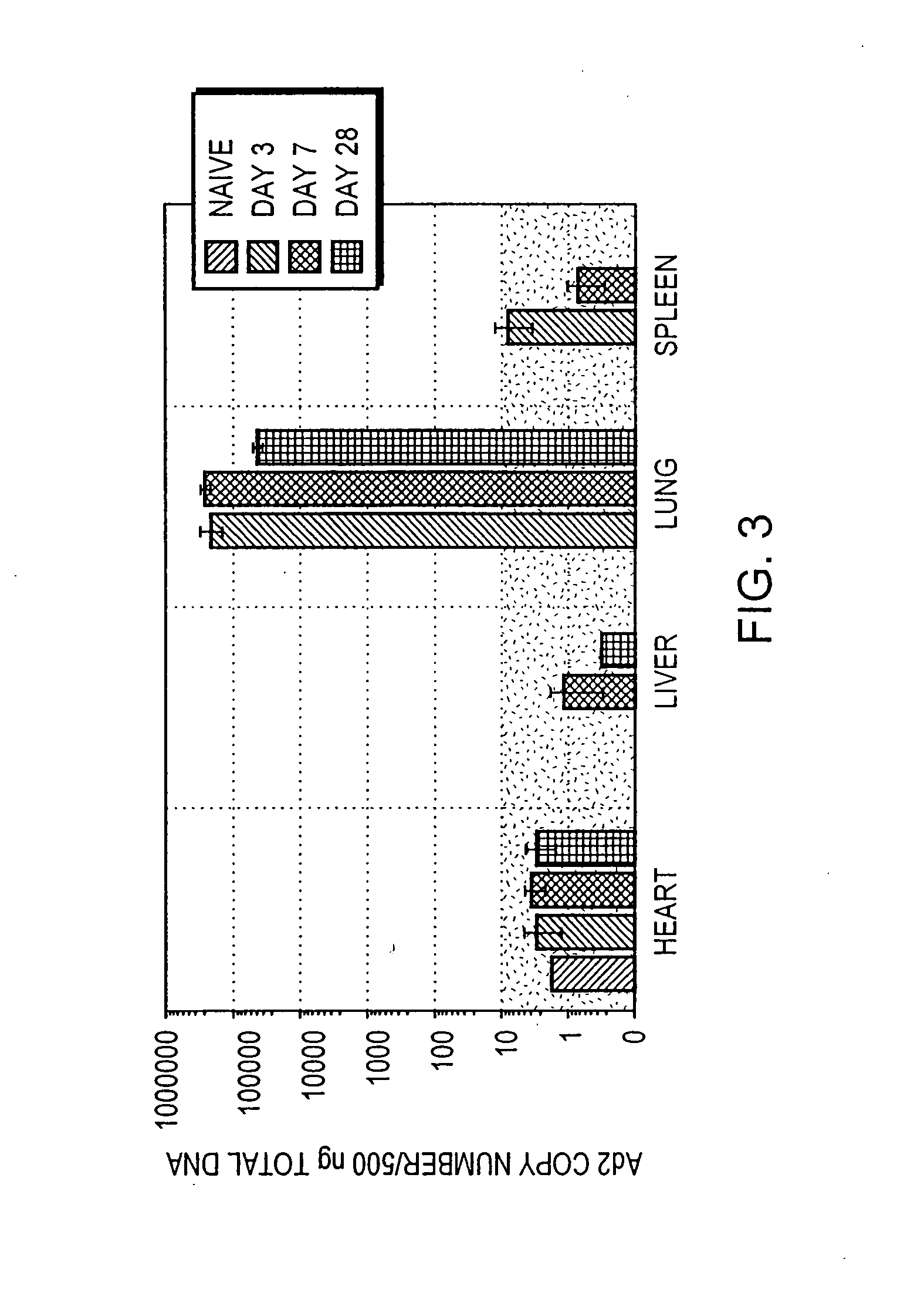Genetic modification of the lung as a portal for gene delivery
- Summary
- Abstract
- Description
- Claims
- Application Information
AI Technical Summary
Benefits of technology
Problems solved by technology
Method used
Image
Examples
Embodiment Construction
[0030] As used herein, the term “pulmonary administration” refers to administration of a formulation of the invention through the lungs by inhalation.
[0031] As used herein, the term “inhalation” refers to intake of air to the alveoli. In specific examples, intake can occur by self-administration of a formulation of the invention while inhaling, or by administration via a respirator, e.g., to a patient on a respirator. The term “inhalation” used with respect to a formulation of the invention is synonymous with “pulmonary administration.”
[0032] As used herein, the term “dispersant” refers to an agent that assists aerosolization of the gene therapy vector or transfection of the lung tissue. Preferably the dispersant is pharmaceutically acceptable. As used herein, the term “pharmaceutically acceptable” means approved by a regulatory agency of the Federal or a state government as listed in the U.S. Pharmacopeia or other generally recognized pharmacopeia for use in animals, and more part...
PUM
| Property | Measurement | Unit |
|---|---|---|
| mass median dynamic diameter | aaaaa | aaaaa |
| mass median dynamic diameter | aaaaa | aaaaa |
| amphiphilic | aaaaa | aaaaa |
Abstract
Description
Claims
Application Information
 Login to View More
Login to View More - R&D
- Intellectual Property
- Life Sciences
- Materials
- Tech Scout
- Unparalleled Data Quality
- Higher Quality Content
- 60% Fewer Hallucinations
Browse by: Latest US Patents, China's latest patents, Technical Efficacy Thesaurus, Application Domain, Technology Topic, Popular Technical Reports.
© 2025 PatSnap. All rights reserved.Legal|Privacy policy|Modern Slavery Act Transparency Statement|Sitemap|About US| Contact US: help@patsnap.com



